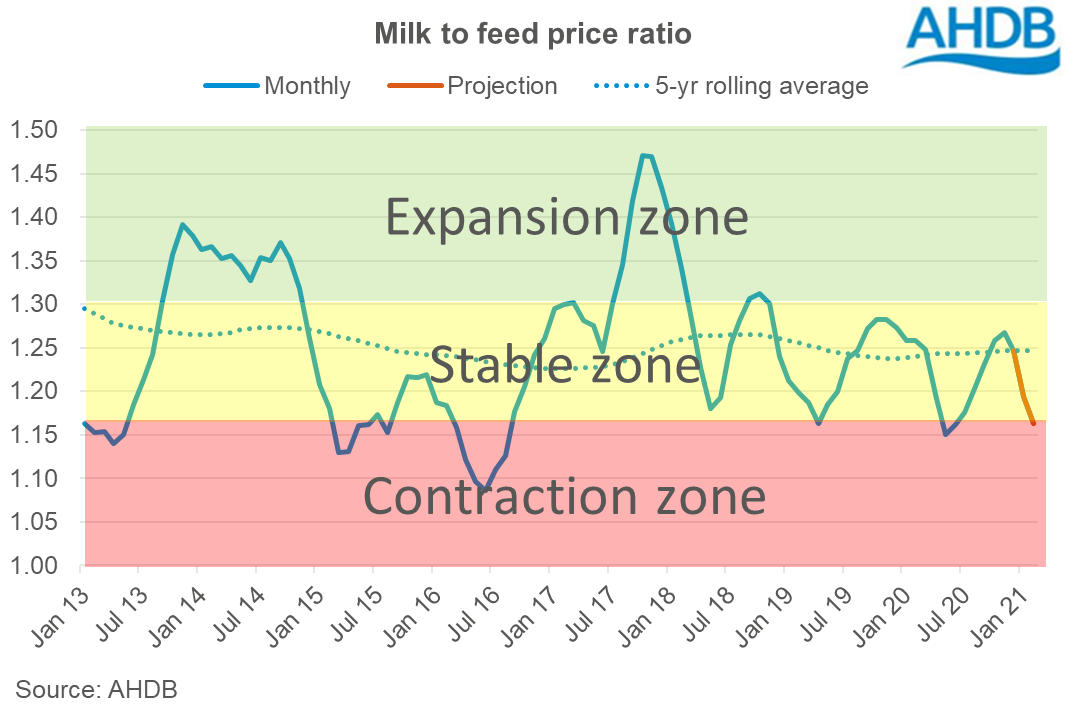How will high feed prices impact milk production this year?
Wednesday, 17 March 2021
By Kat Jack and Chris Gooderham
Feed prices have been on the climb for most of this season, putting pressure on farm finances, but what impact are they likely to have on milk production?
High feed prices on their own aren’t necessarily a problem, provided farmers can afford them. What’s more important is feed prices relative to milk prices – which we calculate in the Milk to Feed Price Ratio (MFPR).

Historically, we have seen that extreme levels of the MFPR correspond with a reaction in milk production. In other words, farmers make changes to their herd size or yield goals based on the financial situation. For example, when the MFPR hit a low in 2016, milk production reduced. When the MFPR then peaked in 2017 and 2018, we saw production increase.
The relationship isn’t always clear though, because there are numerous other factors influencing milk production. Over the last three years, the MFPR has remained relatively stable, predominantly between 1.16 and 1.30, and milk production has also remained relatively stable. It is when the MFPR goes outside these boundaries that we see an impact on milk production.

At the recent Milk Forecasting Forum, we looked at the factors driving feed production and demand. The general expectation was that feed prices would continue to increase in the short term, pushing the MFPR down. Our latest estimate would put the MFPR at 1.16 in February, at the bottom of the “stable zone” that we’ve seen since 2018. Any further increase in feed prices would drop the MFPR into the “contraction zone” where milk production historically has been impacted. For every further £10 per tonne increase in feed prices, milk prices would need to rise by 1ppl in order to prevent the MFPR from dropping into that zone.
Global commodity prices have been moving upwards since the start of 2021, and if these flow through into milk prices, it may be enough to offset any future feed price increases. If not, then, based on historic relationships, we can expect some downward pressure on milk production later in the year.


Sign up to receive the latest information from AHDB.
While AHDB seeks to ensure that the information contained on this webpage is accurate at the time of publication, no warranty is given in respect of the information and data provided. You are responsible for how you use the information. To the maximum extent permitted by law, AHDB accepts no liability for loss, damage or injury howsoever caused or suffered (including that caused by negligence) directly or indirectly in relation to the information or data provided in this publication.
All intellectual property rights in the information and data on this webpage belong to or are licensed by AHDB. You are authorised to use such information for your internal business purposes only and you must not provide this information to any other third parties, including further publication of the information, or for commercial gain in any way whatsoever without the prior written permission of AHDB for each third party disclosure, publication or commercial arrangement. For more information, please see our Terms of Use and Privacy Notice or contact the Director of Corporate Affairs at info@ahdb.org.uk © Agriculture and Horticulture Development Board. All rights reserved.

